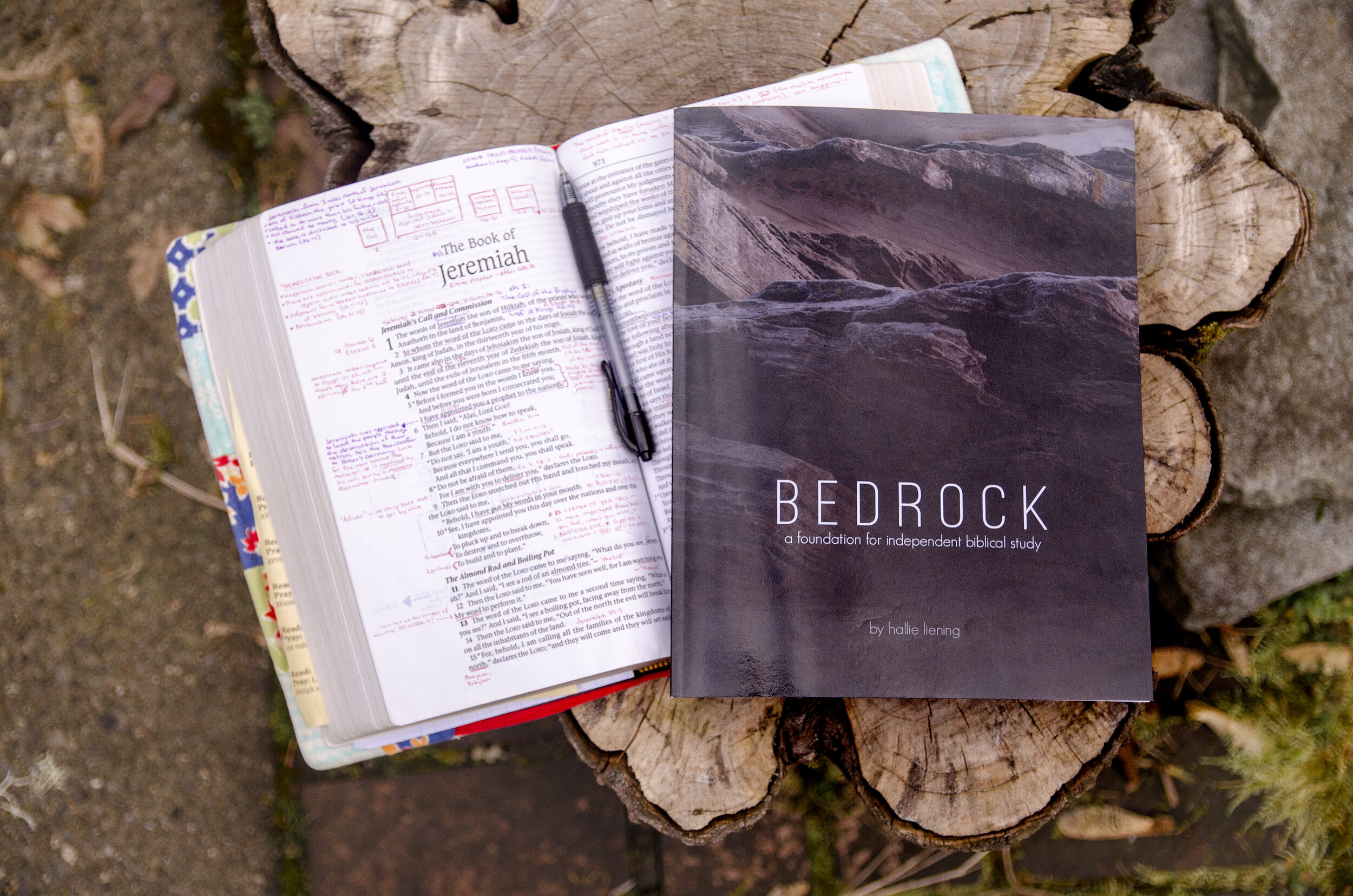how to study the Bible: marinate in it
/In the history of this blog, three of the top five most-read posts have been related to the topic of knowing and studying God’s Word. I love nothing more than hearing someone say, “I’d love to know how to study the Bible for myself” - or, “I’ve been going to church and Bible studies for years but I’m just so hungry for MORE.”
The study of the Bible isn’t just for pastors and elders. God’s Word is not only accessible to those who spend a decade in seminary learning ancient languages. I’m thankful for the people in my life who showed me that I, too, could learn how to study it for myself - because I was (and still am) hungry.
If you are hungry, too, this series is for you.
(See Step One HERE, Step Two HERE, Step Three HERE, Step Four HERE.)
How to study the Bible
Step Five: Marinate in it
The fifth and final step in this brief How to Study the Bible series is, for me at least, the easiest to skip or disregard. It may also be the most important.
I’m speaking from my background as an American Christian when I say that we have a bit of an obsession with achievement in our culture. We love box-ticking, we love productivity, we love lists of accomplishments and letters after our names. These are ways that we measure the value of our time and, often by extension, our lives.
So this last step of Bible study is HARD.
It involves submitting to the fact that we can’t box-tick our way to a relationship with God or understanding of His Word. We can’t read the Bible once and be done. The Bible cannot be mastered or accomplished or achieved. It must be received, and then received again, and again, and again, and again - allowed to permeate our hearts and break down our toughness and flavor us with God’s character.
That’s why I call it “marinating.”
In addition to being a single story that points us to who God is, and in addition to containing seven different literary genres, the Bible is known as Jewish “meditation literature.” It was meant to be passed verbally from generation to generation, read aloud over and over again in the synagogues, and thoughtfully digested through lifelong humble reflection. This attitude of meditation can first be found in the Shema, the daily prayer of the Jews from Deuteronomy 6, which was written long before most of the Scriptures existed:
Hear, O Israel! The Lord is our God, the Lord is one! You shall love the Lord your God with all your heart and with all your soul and with all your might. These words, which I am commanding you today, shall be on your heart. You shall teach them diligently to your sons and shall talk of them when you sit in your house and when you walk by the way and when you lie down and when you rise up. You shall bind them as a sign on your hand and they shall be as frontals on your forehead. You shall write them on the doorposts of your house and on your gates.
Deuteronomy 6:4-9
According to this passage, the Scriptures were meant to both fill and surround God’s people. His Word belonged in their hearts, in their teaching, in their parenting, in their dwellings, in their rest, in their work, in their journeys, in their mundane routines. It was to be bound to their hands (their actions) and their foreheads (their thoughts). It should grace the doors of their homes and the gates of their cities.
No part of life, big or small, was to be void of God’s voice.
This is what it looks like to marinate in the Scriptures. It’s day-by-day, lifelong, transformational meditation on who God is. It’s setting aside achievement and box-ticking in favor of slow, repetitive, restful rumination.
So don’t skip this step. Read through the Bible - and then do it again. Memorize a verse and meditate on it daily. Read slowly. Rest. Talk openly with God, who gave you His Word as a gift, not a burden. This is the work of a lifetime and it will continue into eternity. There is no rush.
For a bit more on the Bible as Jewish meditation literature, check out this video from The Bible Project (the rest of this series on How to Read the Bible is fantastic too):
Still hungry?
Across this series, I’ve tried to give you the five big-picture steps that I find to be most important when developing personal Bible study habits. But there is SO. MUCH. MORE. to learn. For some of you, this overview has been more than enough to get you going, but I know there are probably some students out there who (like me) want to truly dive DEEP.
If that’s you, I’m currently writing an in-depth, textbook-style guide to the study of all seven types of Biblical literature. It’s like Bible school for people who will never get to go to Bible school. If you’d like to get your copy, click here!
Available now!
Bedrock: A Foundation for Independent Biblical Study is Bible school for those who will never get to go to Bible school. Learn the practical steps to thoroughly and confidently study all seven types of Biblical literature while staying true to the nature and origins of this ancient text. Available for purchase soon!













